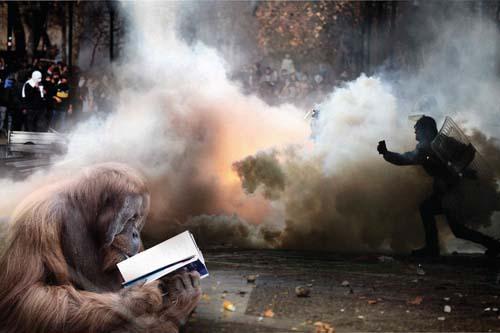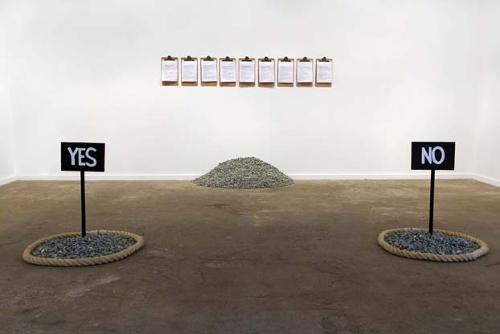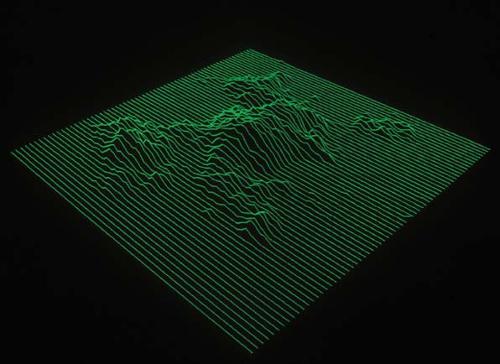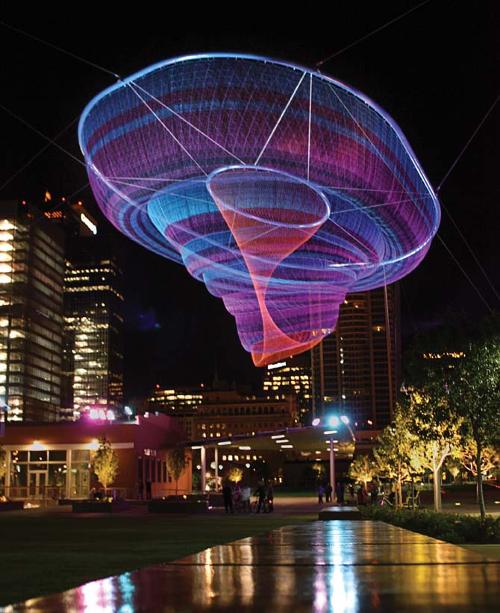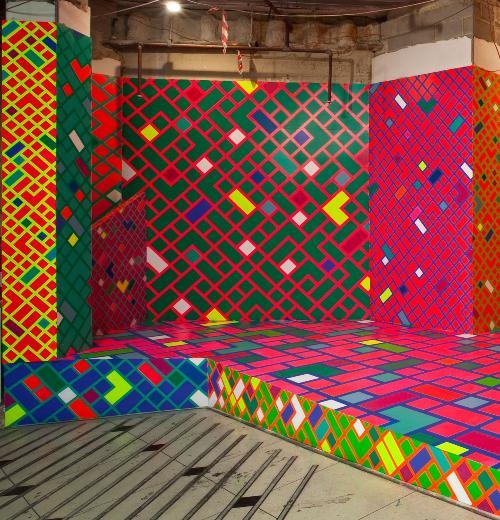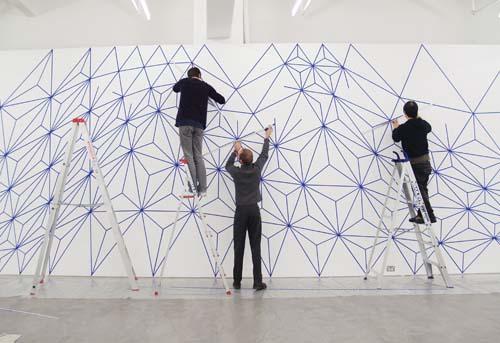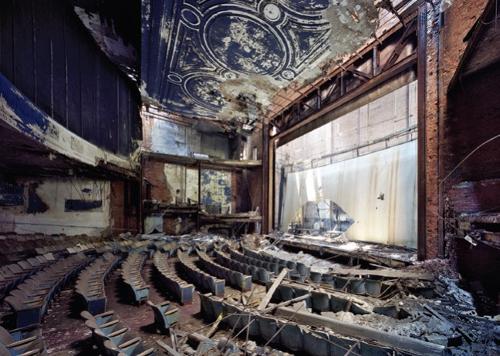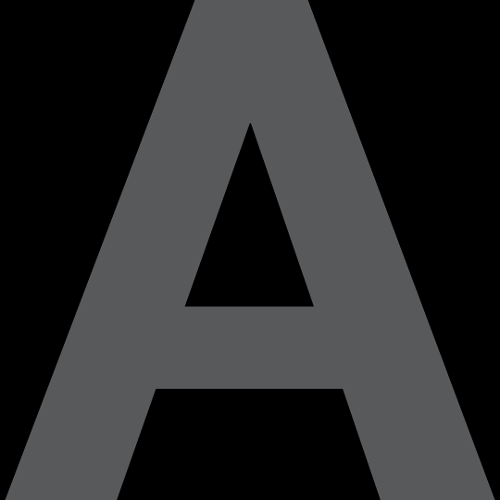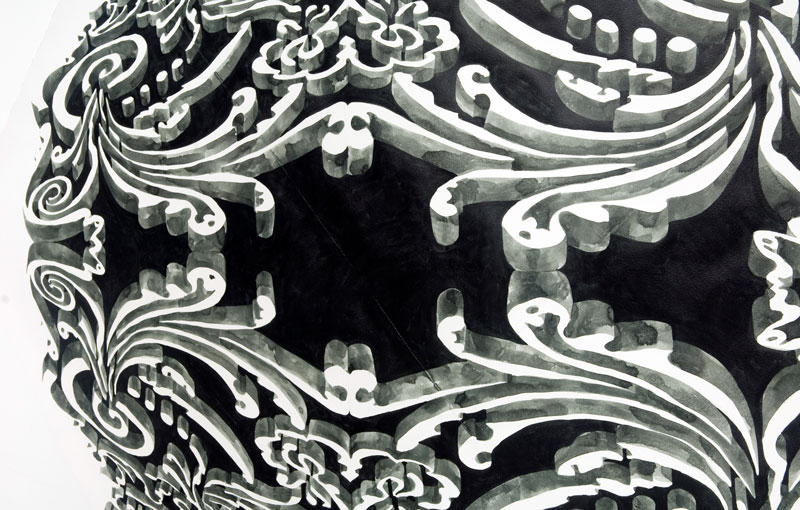
Why is it, then, instead of being distinct from one another, that the forms of life often take the same forms as the natural world beyond the limits of the living? Spirals, lattices, tessellations, undulations, waves and crystalline forms are all found in living cells, both creatures and plants, but also in clouds, sand dunes, storms, rocks, even the arrangement of the planets and the stars.[1]
David Rothenberg, Survival of the Beautiful: Art, Science and Evolution, 2011
Pattern is everywhere in daily life. It is part of the visual complexity of contemporary existence. But from a philosophical and scientific viewpoint patterns are part of an underlying cosmic complexity, which may be conceived as being in a state of dynamic tension between order and chaos. Both this issue of Artlink and the associated exhibition, Art, Pattern and Complexity at the Royal Institution of Australia (RiAus), Adelaide,[2] are prompted by curiosity as to whether there might be the beginnings of convergence or even “consilience” between the often quite divergent approaches to pattern in art and science. Pattern-making in art has been frequently deprecated as a merely decorative pursuit, superficially appealing but lacking deep meaning. In contrast, to discern patterns in complex and apparently chaotic or unpredictable phenomena has been at the very heart of scientific philosophy, and never more so than in the past two decades.
As guest editor of this edition of Artlink, I have commissioned writers to speculate on the current resurgence of pattern and complexity in the practices of contemporary Australian and international artists. These tendencies reflect diverse influences, including cross-disciplinary complexity theories, the impact of the pattern-generating capacities of digital software, pattern arising from natural form, research into the neurological impact of pattern, and the significance of pattern in non-Western cultural traditions.
Ernst Gombrich in his seminal book The Sense of Order (1979) was the last art historian to deal with pattern in any comprehensive way. More recently, there was a section devoted to pattern and complexity in Seen/Unseen: Art, Science and Intuition from Leonardo to the Hubble Telescope (2006) by Martin Kemp, University Professor of the History of Art at the University of Oxford. Philosopher David Rothenberg’s latest book, Survival of the Beautiful: Art, Science and Evolution (2011), is devoted to analysis of the significance of natural pattern and complexity in art and science. Rothenberg argues, “art no longer needs to represent the world as it appears but directly, visually, goes after the pattern and shapes at the root of things, the pure forms, not really abstract, but of nature itself”.[3] He articulates a compelling case for the interrelated biological and mathematical basis of pattern in nature, and in turn our attraction to certain patterns.
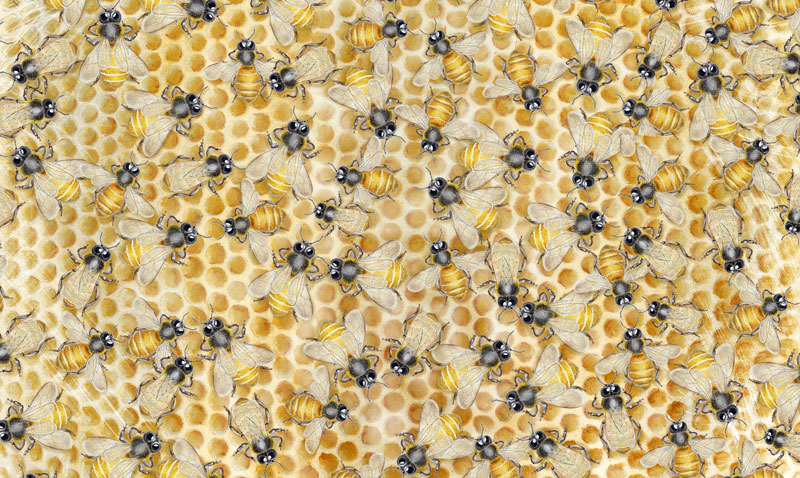
In Consilience (1998) the eminent biologist Edward Wilson stated, “The greatest challenge today, not just in cell biology and ecology but in all science, is the accurate and complete description of complex systems.”[4] Complexity theory is all about algorithms and their potential to unlock deeply complex patterns in the organic and inorganic universe. As Wilson explained, “Complexity theory ... can be defined as the search for algorithms used in nature that display common features across many levels of organisation … At their best, they might lead to deep new laws that account for the emergence of such phenomena as cells, ecosystems and minds.”[5]Slightly more than a decade later, Melanie Mitchell in her prize-winning science book, Complexity Theory: A Guided Tour (2009), defined complexity theory as “an inter-disciplinary field of research that seeks to explain how large numbers of relatively simple entities organise themselves, without the benefit of any central controller, into a collective whole that creates patterns, user information, and in some cases, evolves and learns”. [6]
In his book Reinventing the Sacred: A New View of Science, Reason, and Religion (2008), noted scientist Stuart Kauffman argues for a secular humanist view of the sacred as immanent in the cosmos, based on an emerging scientific world view. The philosophical significance of these trends in scientific thought and their potential relevance for art is that they discern coherency, underlying pattern and deep meaning in a seemingly random and chaotic universe. This holistic tendency moves in the opposite direction to the fragmentation and reductionism that characterised many 20th-century scientific and artistic movements.
While scientists work with hypotheses based on testable data, artists have the creative freedom to draw on scientific philosophy for metaphors. In her final 2011 Boyer Lecture, the Pulitzer Prize winning novelist Geraldine Brooks talked about the cross-over between fact and fiction and how the facts of history were a launching pad and stimulus for her creative imagination as a novelist. I am inclined to believe that something similar takes place with those visual artists who find in the hard-won factual basis of scientific theories the stimulus for creative extrapolation and invention. Then there are those artists who have a sound knowledge base in science and who are working at the interface between art and science. Finally, there are artists who blithely unaware of science grasp intuitively at its most penetrating insights.
Non-scientists have become increasingly aware of the philosophical and metaphorical resonance of complexity theory and its applicability to art. In a conversation with Phillip Adams on the ABC’s Late Night Live, former Prime Minister Paul Keating made the comment, “I think that music does something to the creative part of our mind. Our DNA is wired for music … The great composers make these algorithms in music.” Adams replied, “Now there’s a buzz word, algorithms …”.[7]
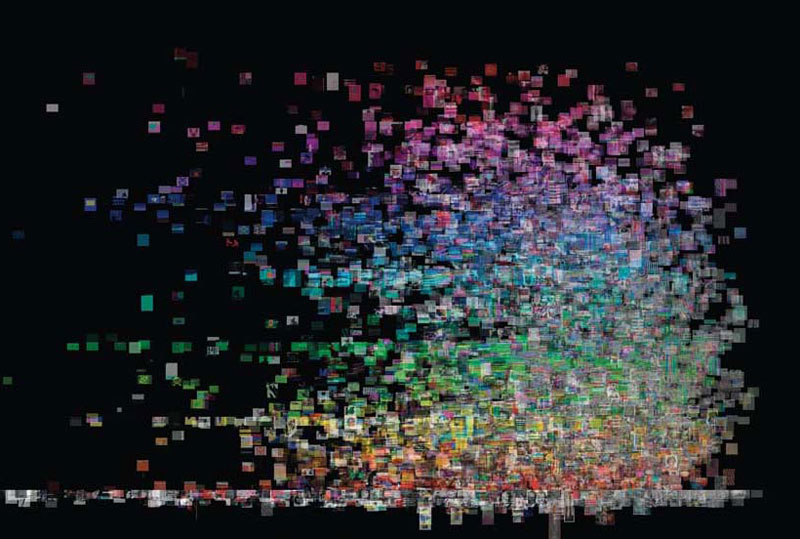
Artists with a command of computer science, who are working with cutting-edge software, or even writing their own programs, have been among the first to pick up and run with these ideas. In this issue, Melinda Rackham ponders whether the proliferation of pattern and complexity in recent art is directly related to digital media’s reiterative processes. She finds the “world as we know it is ending” as she probes the “post-network” frontier of digital art in the practices of four artists – Champagne Valentine, Peter Miller, Mitchell Whitelaw and Tracy Cornish. Each works in highly innovative ways with the generative non-deterministic evolutionary potential of software programs.
Rackham’s predictive approach, mapping the rapid encroachment of the future on the present, forms one bookend for consideration of pattern and complexity in digital media. The other bookend is the retrospective essay of Paul Brown, who traces the rich history of convergence and divergence between art and mathematics, from the generative geometric patterns of the Fibonacci sequence through to the evolutionary algorithmic patterns of digital art today, including such key 20th- century figures as computer genius Alan Turing and Benoit Mandelbrot who discovered the Mandelbrot Set and coined the term “fractal”. This segues neatly into an elegant analysis of the fractal patterns of the Romanesco cauliflower by American software designer/polymath blogger John Walker. His “Fractal Food” blog was first published on the web in 2005 but seems so apt to this issue that republishing it in an arguably more permanent medium with a different readership was irresistible.
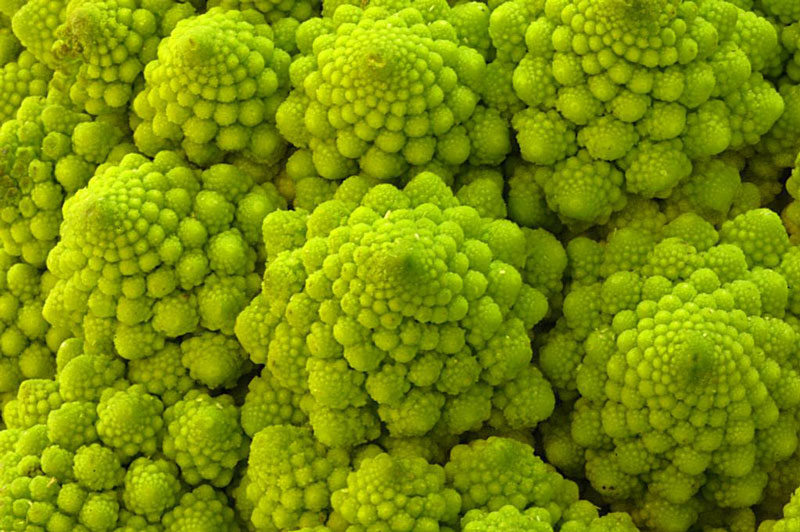
In his historical overview Brown acknowledges the role of 19th-century pioneer of algorithmic calculations Ada Lovelace and her famous quote: “We may say most aptly that the Analytical Engine weaves algebraical patterns just as the Jacquard-loom weaves flowers and leaves." Her prescience was acknowledged in the Powerhouse Museum exhibition Love Lace surveying contemporary lace. In this issue, the exhibition’s curator Lindie Ward writes about the underlying mathematical basis of lace-making and its diverse interpretations by contemporary practitioners. These range from the innate mathematics of traditional lace-makers to the complex computations of digital media. Ward’s selection embraces lace patterns arising from nature but also those based on the complexity of cultural networks. She addresses the continuum of patterns created by intention and those occurring through random or intuitive processes. She states: “For centuries artists and artisans have experimented with the patterns of numbers, fractions, repetition, elasticity, perspective and complexity to bring extraordinary visual works to life, long before those techniques were formally expressed in mathematical terms.”
For Love Lace, Melbourne and Copenhagen-based urban design studio MESNE, in collaboration with supermanoeuvre, designed software for an interactive pattern-making table Pricking. A new version of this table will be exhibited in the RiAus exhibition. For Artlink MESNE principals Tim Schork and Paul Nicholas provide a rationale for the group’s innovative practice, while interactive media artist Fee Plumley responds to her experience of Pricking. Textile designer Natalie McLeod is another exhibitor from Love Lace, who is featured in our portfolio section as well as being an exhibitor in the RiAus exhibition. My editorial intention to canvas the theme of pattern and complexity more broadly beyond the art/science interface led to some interesting results, with contributors choosing to run with the theme in intriguing directions. Adelaide street artist Peter Drew writes about the evolving iconography of the “meme” in street art. Cath Bowdler argues for the validity of Brook Andrew’s radical interpretation of traditional Indigenous designs.
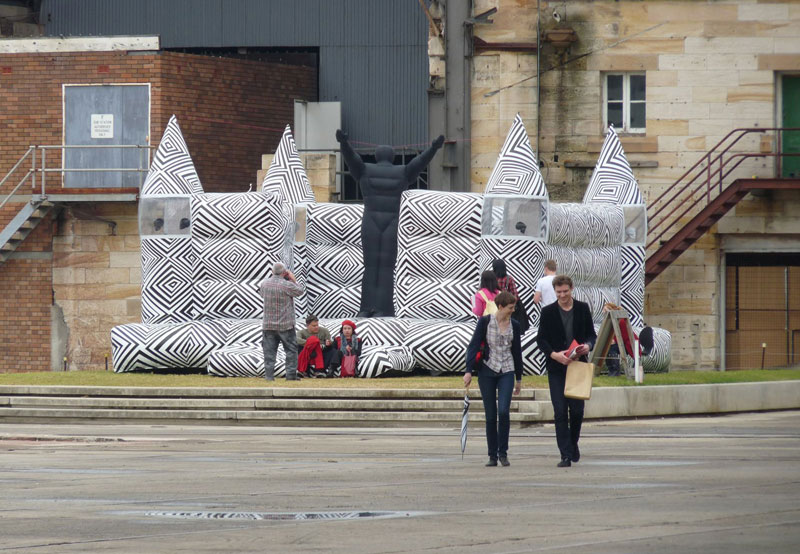
John Neylon reveals the sources of the domestic and natural patterns which find their way into the ceramics and paintings of Adelaide artist Helen Fuller. Pete Hay evokes the natural patterns underlying Tasmanian artist Sue Lovegrove’s finely calibrated abstraction. Matt Huppatz delves into the optical strategies of Sam Songailo, while Stephen Garrett analyses the complex optical paintings of artist Caroline Durré. Artist Kerrie Poliness provides a rationale for her approach to pattern in her ongoing series of wall drawings based on instruction books. My profile of American artist Janet Echelman explores the exquisite balance between science and poetry in her aerial sculptures.
The portfolio in this edition is a selection of images of artworks and accompanying text excerpts pertaining to diverse interpretations of pattern and complexity. As with a curated exhibition, it is my hope that this selection creates unexpected connections as well as highlighting the diversity encompassed by our chosen theme. Consider for instance the underlying complexity philosophies connecting sculptures by Antony Gormley and Big Bambú by Mike + Doug Starn. Or, the still under-appreciated relationship of pattern and narrative in the painting by Torres Strait Islander artist James Billy and in the magnificent painting resulting from the collaboration between Robin White (NZ) and Fijian artists. Or, how the abstract paintings of Lesley Dumbrell, Cathy Blanchflower and Helga Groves relate to ideas in neuro-aesthetics, while attesting that pattern is not independent of its medium but embodied in it.
In offering glimpses of art not covered in the features or profiles, the portfolio is recognition that this issue is the proverbial tip of the iceberg. Of necessity, there are whole areas left unexplored, notably the importance of Samir Zeki’s neuro-aesthetic research in revealing visual stimuli that operate on our neural chemistry and their relationship to pattern in nature.[8] Pattern and complexity in contemporary art are manifestations of diverse cultural inputs. It is an open question whether all these manifestations can be contained by algorithms, or are metaphors drawing on scientific philosophy or visualisations of primal instincts. This issue stands as an experiment to find out more about the way pattern operates in contemporary art and as a rebuttal of the tendency to trivialise it.
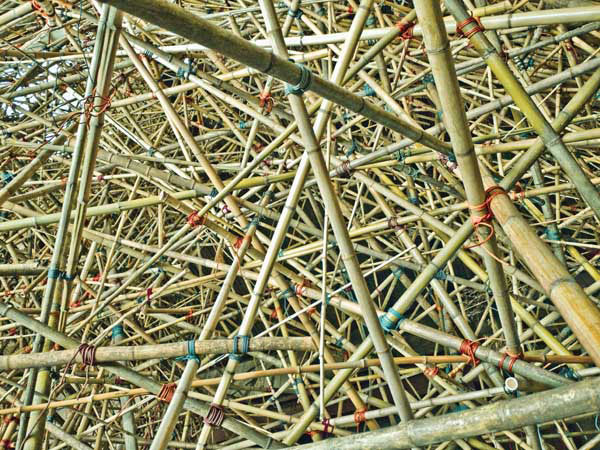
Footnotes
- ^ David Rothenberg, Survival of the Beautiful: Art, Science, and Evolution, New York: Bloomsbury Press, 2011, p. 51.
- ^ The exhibition, Art, Pattern and Complexity, Science Exchange, RiAus, Adelaide, (16 February – 16 May 2012), featured site-specific and digital works by Paul Brown, Tracy Cornish, Caroline Durré, Gregor Kregar, Natalie McLeod, Jon McCormack, MESNE, Kerrie Poliness and Sam Songailo. Guest curator: Margot Osborne.
- ^ Rothenberg, p. 54.
- ^ Edward O. Wilson, Consilience: The Unity of Knowledge, London: Little, Brown and Co., 1998, p. 93.
- ^ Wilson, p. 95.
- ^ Melanie Mitchell, Complexity: A Guided Tour, Oxford University Press, New York, 2009, p. 4.
- ^ ABC Radio National, Late Night Live, 1 December, 2011.
- ^ For further information on this there are two websites of interest: http://profzeki.blogspot.com and http://neuroesthetics.org.

